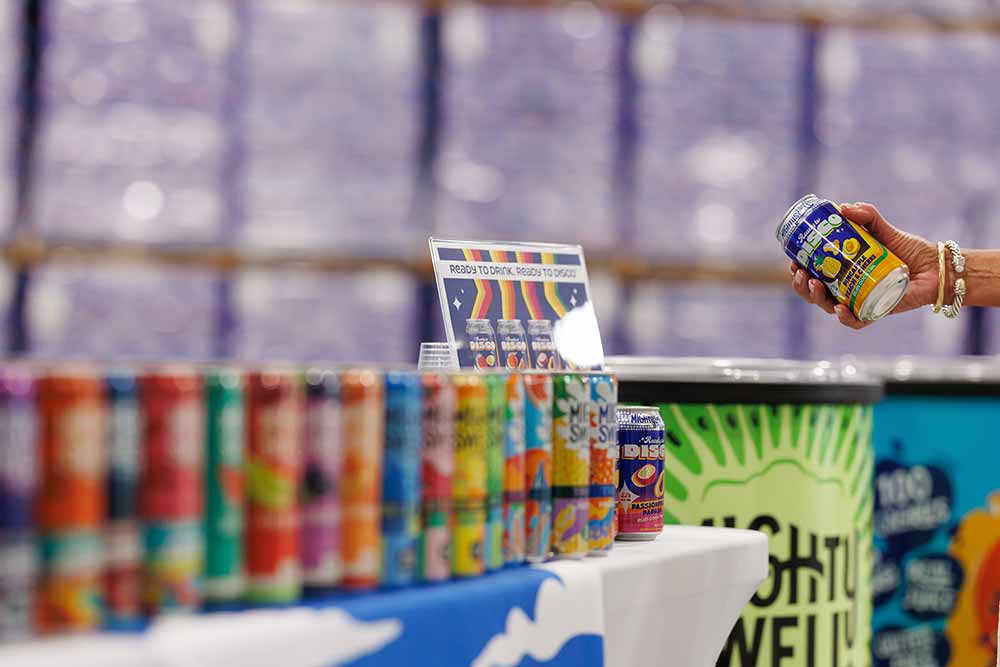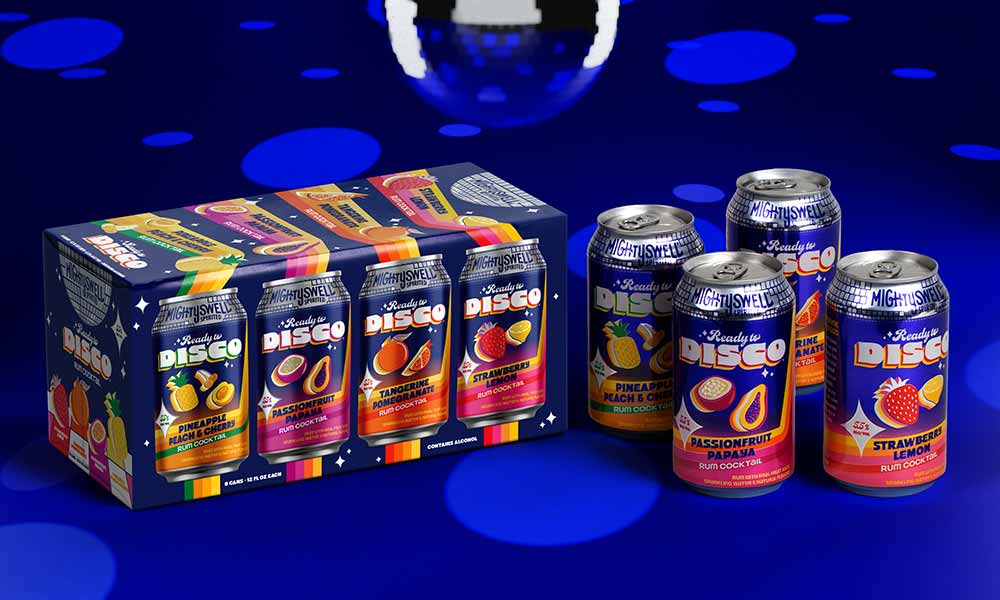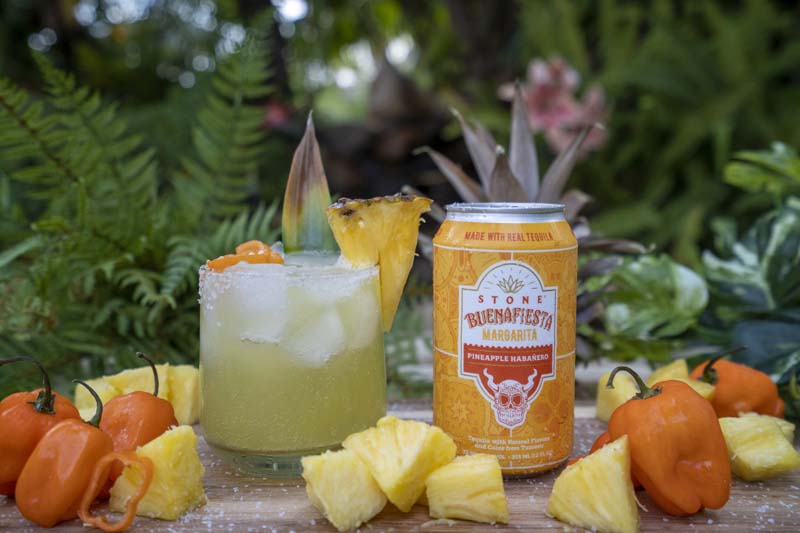
It’s no secret that growth in the craft beer industry has slowed significantly. In 2024, according to a National Alcohol Beverage Control Association report, more craft breweries closed than opened for the first time in two decades. This trend could be partly due to the younger generation. A Circana survey earlier this year reported that fifty-two percent of Gen Zers live an alcohol-free life because they just don’t want to drink. With that in mind, diversifying to non-beer options, like RTDs, should be highly considered by breweries looking for a boost to their bottom lines.
“What I hear from clients is, ‘The [craft beer] market is so bad, I need to diversify,’” Beer Law Center Founder John Szymankiewicz says. “They are looking for another beverage or variety or something else to do.”
While some may think the RTD boom is in the past, a Grand View Research report forecasts a 15.3 percent compound annual growth rate (CAGR) through the end of the decade. That’s a higher CAGR than the 12.3 percent growth rate Data Bridge Market Research projects the craft beer market to see through 2032. Szymankiewicz believes there’s something to this.
We’ve previously chatted with Beer Law Center to get a legal take on maximizing the use of AI for good, understanding the nuances of making a hemp-based THC-infused beverage, the necessity of having an employee handbook at your brewery, and the dos and don’ts of raising capital. For this piece, Szymankiewicz explains the importance of adding an RTD to your menu, how to overcome the federal and state legal hurdles you face when considering RTDs, and why the RTD is making a comeback in the craft beverage industry.
(Photography courtesy of Lemonati)
Affordable, Industry-Leading Brewery Software
What Is Beer Law Center?
The former engineer and project manager, Szymankiewicz, founded North Carolina-based Beer Law Center shortly after earning his law degree from NC Central University School of Law in 2010.
“I come to the law as Career 2.0,” Szymankiewicz says about creating the boutique law firm that focuses on alcohol law.
After running out of steam in the engineering field, Szymankiewicz, an avid homebrewer with nearly three decades of experience crafting small-scale beer, pursued a career in law to focus on his true passions.
“I enjoy drinking and making beer and love the industry,” he says. “We saw there wasn’t anyone dedicated to the craft beverage segment.”
Since launching the firm, he has made it his mission to help breweries understand the legal issues surrounding alcohol production—an unusual segment with just a few dozen practitioners nationwide, according to Szymankiewicz.
“And now that’s all I do,” Szymankiewicz says.
Beer Law Center can be viewed as a firm specializing in business law, with an emphasis on alcohol-related matters, providing expertise in corporate structure, licensing and permitting, trademarks, federal law, and transactions involving buying and selling, among other services.
“We help sort through things and help you know what it all means,” Szymankiewicz says. “We found that over the years, Beer Law Center has become more of a business counselor.”
Are RTDs Making a Comeback in the Craft Beer Segment?

Photography courtesy of Stone Brewing
Szymankiewicz previously hinted while talking with us about THC-infused beverages that the segment was like the Wild West, suggesting, “A lot of people will get into it, and the law will change … and people will get out of the THC beverage game.”
Regulators have set some boundaries on THC-infused beverages, leaving breweries scrambling for another option.
“States are jumping in with regulations. It was the Wild West earlier this year, and that’s not the case now,” Szymankiewicz says, noting that in Virginia, regulators have allowed companies to max out their THC at 2mg per container.
In response, he says that hardly any multi-state operators will make a THC-infused beverage for Virginia because of that regulation. “We know the THC business and regulations aren’t really stable,” says Szymankiewicz, noting that Texas and Ohio are trying to ban all THC beverages. “It could be taken away tomorrow.”
Since some breweries are seeing that the THC option isn’t viable, “breweries are wondering what’s the next thing to do,” notes Szymankiewicz. “That’s why RTDs are floating back to the top, and they are circling back to them.”
Szymankiewicz believes RTDs can help diversify a brewery’s portfolio, offering more beverages for non-traditional beer drinkers. “I don’t know anyone who doesn’t like a Sea Breeze,” he says of the popular cocktail made with vodka, cranberry, and grapefruit juice. “As breweries, you can make that and serve it on draft and give someone a new experience. So even if you don’t have a full bar [with spirits and wine], you can make a flavor-driven malt beverage.”
Bottom line, Szymankiewicz says that with the ever-changing craft beer scene, looking into alternatives is never a bad idea.
“As we look at an industry in flux,” he says, “maybe RTDs are another arrow in your quiver to offer to your customer and improve the bottom line.”
The Three Essential Benefits of Adding an RTD to Your Portfolio

Photography courtesy of Lemonati
Szymankiewicz says many breweries have seen their consumer base change, so they need to change too, or they won’t be sustainable. RTDs allow them to make a subtle shift without breaking the bank by investing in a bunch of new equipment.
“Know your audience,” Szymankiewicz says. “They may be looking for something healthier or low alcohol, or no alcohol. Breweries have the technology to do that.”
He sees three benefits of adding RTDs to the menu: providing a different customer experience or offering, utilizing capacity you already have, and creating a new brand.
“New product variety is a big one,” Szymankiewicz says of what he believes is the top benefit. “We saw the THC need and we responded to that. Where it doesn’t make sense, an RTD can come into play.”
Szymankiewicz says that breweries are already set up well to make RTDs thanks to their creativity and equipment—tanks, kegs, packaging machinery, and taps.
“Utilizing that capacity that you already have with your brewhouse and reducing potential overhead by already covering that cost [is a big benefit],” he says. “It’s not necessarily a money maker, but RTDs don’t lose money.”
And offering something new is exciting to a lot of consumers, according to Szymankiewicz.
“RTDs give you the opportunity to create a new identity to expand the brand and business,” he says. “That’s another asset that you have levers to pull.”
Szymankiewicz points to Boston Beer Company with its Beyond Beer brand that creates a high majority of its volume.
“An RTD brand is something you can spin off,” Szymankiewicz says. “I think of it a lot like American car brands—the same company makes three different versions of the same car.”
What Are the Legal Ramifications of Making an RTD at Your Brewery?

Photography courtesy of Stone Brewing
While there are benefits of making an RTD, Szymankiewicz says there are some legal issues to consider as well.
Szymankiewicz says you can’t just make an RTD; you need to intentionally think about a new brand.
“First thing to think about is, ‘What are you trying to make?’” Szymankiewicz says. “And then, ‘Why are you making it?’”
“If you do an RTD with distilled spirits, that’s fundamentally different from the federal perspective and state-to-state ABC laws,” says Szymankiewicz, citing how in North Carolina you can only sell RTDs with spirits in specific state-run ABC stores.
Flavored malt beverages, on the other hand, are allowed under a brewery’s current license and therefore have fewer hurdles. “If it’s malt-based versus spirit-based, your body doesn’t know where the alcohol came from,” says Szymankiewicz. “You can make something that tastes like a Moscow mule [or another malt-based beverage emulating a cocktail], and it was made from a brewery.”
Szymankiewicz says that there are additional hurdles, especially with low- to no-alcohol RTDs.
“If you drop below 0.5% ABV, you are no longer protected by the TTB and have to follow the FDA guidelines, including putting nutritional stuff, etc.,” he says. “At that point, you’re not a beer, you’re a soda.”
Then, when it comes to seltzers, which can sometimes fall under the RTD category, you need to adhere to different TTB regulations.
“There has to be a formula approval for that, whether it’s canned or not,” Szymankiewicz says.
Then, of course, if you do a spirit-based option, that’s a different license.
“Are you going to produce this stuff or mix it?” Szymankiewicz says. “If mixing, maybe it qualifies as a mixed cocktail in your location.”
Overall, you need to answer a lot of questions when considering making an RTD. Outside of contacting someone like Szymankiewicz for legal advice, the Beer Law Center founder says you absolutely need to “look at [your] state regulations.”
Do You Need to Consult a Pro About RTDs?
RTDs can potentially drive more customers to your taproom, put more butts in seats, and provide an alternative revenue stream for your bottom line.
Especially during a time when beer isn’t selling as well as before the pandemic, RTDs can be a viable option to diversify a brewery’s portfolio while using equipment you probably already have in your facility.
“The industry is creative,” says Szymankiewicz. “So how do we harness that to do something interesting and fun?”
You can start by educating yourself on the dos and don’ts of starting a new beverage or brand. Ask yourself: Are you one hundred percent certain of your local, state, and national laws?
“If you’re unsure, talk with a lawyer in your jurisdiction. Or talk with someone at the ABC,” Szymankiewicz says.
Or better yet, call pros like Szymankiewicz and Beer Law Center for guidance. Though not licensed in all fifty states, because the alcohol law field is so niche, Szymankiewicz can also put you in touch with a lawyer licensed in your state.
You can find everything you need to know at www.beerlawcenter.com and on all the social media sites @beerlawcenter, or email Szymankiewicz directly at [email protected].



